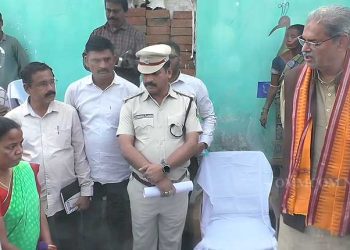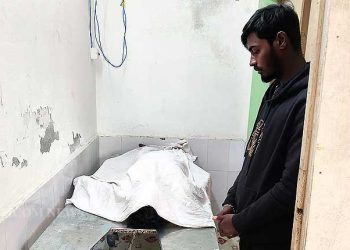Dr. Binaya Bhusan Jena
Today is the International Mother Earth Day. First celebrated on 22nd April 1970, a time when environmental protection was not yet a priority of the national and international political & policy agenda. However, the General Assembly of the United Nations declared Earth Day as International Mother Earth Day in December 2009, almost after 40 years of the first celebration of Earth Day.
It may be true that we’re better off today in material living standards and have made remarkable progress in science & technology and have enough food to eat. But this has come at a huge environmental cost. Since 1970, according to an estimate of the World Wildlife Fund’s Living Planet, the wildlife population has declined by 40 percent. It was reported by International Union for Conservation of Nature (IUCN) Red List, that there are 37,480 species threatened with extinction. In India, we have around 200 species that are identified as critically endangered that includes animals and plants. We are literally destroying the ocean, the ecosystem and her biological richness and altering the oceans’ chemical makeup with greenhouse gas and pollution, particularly plastic pollution, and have already created hundreds of dead zones threatening the marine bio-diverse ecosystem including the coral reefs. Hundreds of marine species including turtles and birds die from consumption of plastics and the rising carbon emissions are making the oceans more acidic, weakening its ability to sustain life both underwater and on land. As per a survey conducted by WWF, 88 percent of marine species are harmed by serious plastic contamination in the water, and more than half of the world’s marine species do stand on the brink of extinction by 2100.
Our rainforests that capture vast amounts of carbon, aid cloud formation, protect against desertification, contain the majority of terrestrial life on earth and provide a huge assortment of life-saving medicines continue to vanish at staggering rates. It dose not just stop there. According to the UN, Seven billion people will suffer from water scarcity by 2050. Thirty Indian cities, including Mumbai, Jaipur, Kolkata, Amritsar and Kozhikode could dramatically face severe water crisis unless urgent action is taken to mitigate and adapt to climate change.
Since 1970, we have seen several declarations that address climate change. However, the situation has gone from bad to worse in the last five decades. Biodiversity and bio-abundance continue to decline and unless large-scale actions are taken on war footing, we might face devastating environmental and climate-related consequences.
There is an urgent need to recall the wisdom of our ancestors. While the mainstream Western philosophy sees nature as mere “resources” for human consumption, we see nature-human relation in the light of a mother-child relation. The verses of the Vedas reveal profound reverence towards Mother Earth. The Bhagavad Gita tells us that a life without contribution toward the preservation of ecology is a life of sin and a life without purpose or use. The Upanishad says, “tat sristva ta devanu pravisat”(“after creating the universe, the Creator entered into every object created”). That is why they always worshiped the pancha mahabhutas, mountains, rivers, animals, and birds, as they had understood the interdependence. The concept of Mother Earth advocated in the Vedas, particularly in Bhoomisukta, is inimitable. The Hindu Declaration on Climate Change, presented in December 2009 at the Parliament of the World’s Religions in Australia, reminded the world of the symbiotic relationship between the Earth and the Human. “Mata Bhumi Putro aham Prithivyah! Earth is my mother, I am her son!” – Atharva Veda, 12-1-12.
The theme for International Mother Earth Day 2022 is “ Invest in our Planet”. Question is, how do we invest and what do we invest? We can no longer sit idle and keep complaining about governments and industries that are yet to find an effective roadmap for addressing the environmental challenges the planet is facing. We are at a horrifying stage for our own existence and for the existence of all other forms of life that depends on this earth. Our behavior continues to be like the fabled woodcutter who is cutting the branch of a tree on which he is sitting. The menace of environmental crisis is gradually approaching a point of no return. So, if we really want to invest in our planet, we have to raise the collective and individual consciousness about the environmental impact. Recall the third Avtar of Lord Vishnu, the Varaha Avtar, wherein he appeared as a wild boar to save Mother Earth from the clutches of a demon named Hiranyaksha. Let us invoke the Varaha Avtar of Lord Vishnu, already present inside us, to reappear and save our Mother Earth.
Dr. Jena is a Professor and practitioner of sustainable fashion at National Institute of Fashion Technology (NIFT), Bhubaneswar, known for his concept and model of “Farm to Fashion”.




















